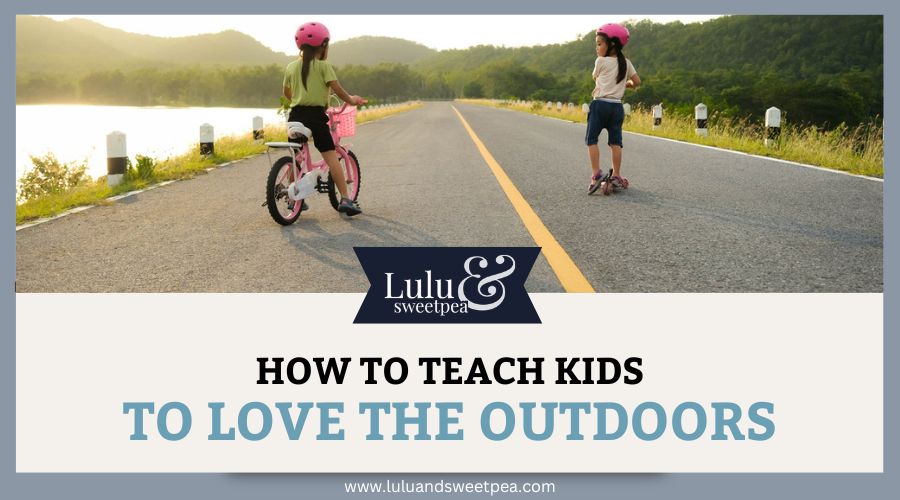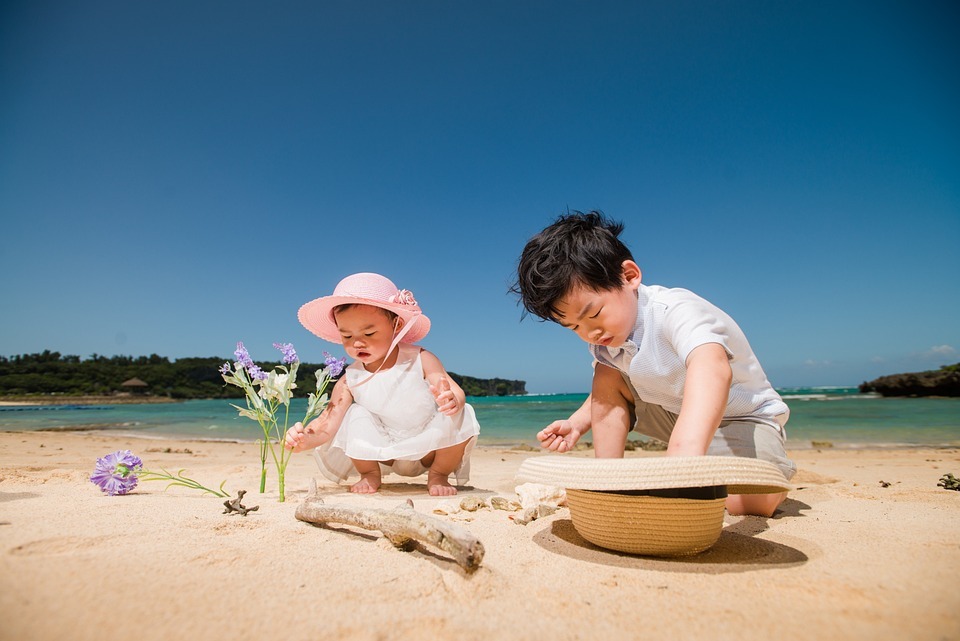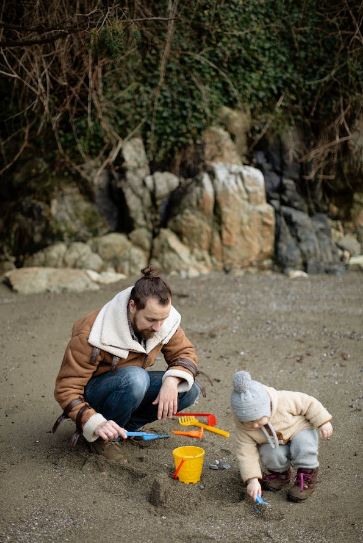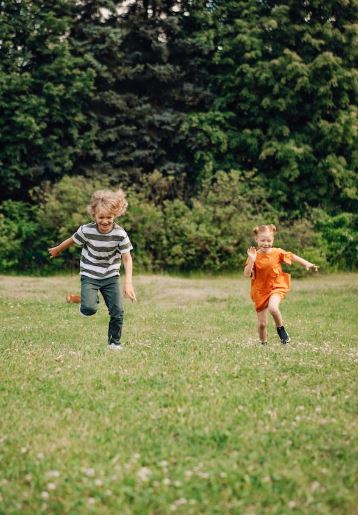Childhood today differs significantly from childhood thirty years ago. The technological revolution has made it easier than ever to be riveted to a screen from dawn to dusk. The amount of hours that children of all ages spend in front of devices has also been continuously increasing. There is a heated debate over the impact of these hours, and parents on both sides have valid arguments. Today’s children are also more likely to have daily enrichment activities arranged before or after school, reducing their opportunities for unstructured play, discovery, and even boredom.
Unfortunately, a disturbing consequence of all this electronic time receives less attention. Less time spent immersed in nature weakens children’s connection to nature. In a world rife with environmental problems that are only likely to become more severe before they improve, we have a responsibility to teach our children to be nature lovers and protectors. However, easier said than done, right?
It begins at a young age. Here are some tips.
1. Identify local adventure hotspots
As your kids become older, it gets simpler to tackle the bigger adventures. Providing children with time to unplug and, heaven forbid, become bored is essential to helping them become aware of the natural environment. With the correct mindset, even an overnight camping trip may be an escape to the wilderness. Leave the technological devices at home, bring paper and pencils for drawing and writing, and don’t forget the hot cocoa.
Outdoors, children run a bit more freely, jumping from rocks, hunting salamanders, and staying up late to observe the stars. These recollections are held together by the quiet pondering times of early morning breakfast preparation and late night campfire comforting silences. It can be challenging, but try to avoid overscheduling visits with too many must-see destinations. Relax the pace a bit, and your family will develop its own rhythm.
2. Bring friends!
Families that frequently venture into the wilderness might also serve as trail ambassadors for less experienced acquaintances. Invite the class’s newest member on your next family outing. Invite their parents to accompany them!
Finding “initial outings” that are easily accessible and manageable is a good rule of thumb when taking younger junior adventurers out for the first time. At garage sales and gear swaps, it is simple to find inexpensive secondhand daypacks, raincoats, and water bottles to bring along for friends. When children (and their parents) are warm, dry, and comfortable, the experience is far more enjoyable.
3. Do not yield to discouragement and indifference
Hiking, camping, and practically other outdoor activities with infants, toddlers, and preschoolers are typically more effort than joy. Don’t be disheartened; take them out regardless. If you wait until your child is older, he or she may not be interested. Introduce young children to the outdoors and make it a part of your family’s lifestyle in order to instill in them a lifelong appreciation for it.
4. Throw away your schedule
Whether on a family outing or a difficult mountain ascent, I believe that people frequently get into trouble because they forget that the journey is the most important aspect. Do not become so attached to your schedule that you fail to recognize when it is time to switch to Plan B.
Taking children outside, particularly smaller children, does not always go as planned. Adults hike for exercise, the scenery, and to get somewhere; children wish to throw rocks in a brook and play in the mud. Allow them. Explain to the children that there will be time for both playing and trekking. Encourage your adolescent to bring a friend. Find a balance that satisfies both parties, granting children some input without abandoning control.
5. Evict them from the premises
Kids today prefer to play indoors (where there are devices) and claim that there is nothing to do outdoors. Insist that they play outdoors, but give them the freedom to roam within age-appropriate bounds so they may explore and avoid becoming bored. (Consider how far you went from home as a youngster; disregard unfounded anxieties about your child’s safety.) When children play outdoors, they will be more physically active than when they play indoors.
In addition to regular, unstructured outdoor play—vital to a child’s development, as Richard Louv has persuasively demonstrated—involve them in energetic, seasonal sports such as soccer to maintain their health without them feeling like they’re “training.” It is also beneficial to engage in frequent physical activity as a family, such as cross-country or downhill skiing, hiking on nearby trails, biking, or even just walking around town.
6. Pursue your kid’s passions not yours
Parents who are motivated and well-intentioned must remember that their child is not them. They will have their own distinct personality, strengths and weaknesses, and hobbies and passions. It can be a grave error to think that your child will share your passions simply because they grew up around them. Some individuals are simply unique and fall in love with unique objects. That’s OK.
Attempting to mold your children into someone they are not will inevitably destroy your relationship with them. It might potentially damage their relationship with the sport or activity you want them to undertake. When a child discovers something they are passionate about and their parents encourage them to pursue it, the sky is the limit.
Also, don’t be scared to educate kids how to be enthusiastic. Children are born with emotions, but without the vocabulary necessary to name and reflect on them. If you observe your child developing a passion for anything, encourage them to investigate their emotions by discussing it.
7. Get the children excited
It is futile to attempt to do something for a group of unwilling children. And you should not expect them to be appreciative of your efforts or even friendly towards you at first. Create a list of different activities, describe them to the children, and then allow them to choose one. After they choose, it is my responsibility to assemble the components.
8. Put them in your garden
Helping you in the garden is a fantastic approach to encourage your youngster to appreciate the outdoors. Allow children to get their hands filthy and dig in the dirt to discover various insects, worms, and other critters. Teach them how to take care of the growing plants. This is an excellent opportunity for kids to gain direct knowledge of nature. Assist them in installing a bird or butterfly feeder in the garden so they may see their newfound wildlife companions.
9. Take the children to national parks
Plan an annual family trip to a national park, either nearby or further away. Take a picnic and visit parks in your city. Introduce them to the pleasures of trekking. Your children will learn something in the process of touring the National Parks, which offer an abundance of enjoyable ways to spend time. Participation in the Junior Ranger Program is one of the activities available at National Parks. The Junior Ranger Program is informative, encourages children to explore the park, and is ideal for homeschooling. Additionally, we bought each of our children a National Park Passport that they can stamp whenever we visit a new park.
10. Utilize narratives to spark interest in nature
Children are continuously absorbing information, and they use all the information they receive from the outside world to develop their worldview. Using storytelling, you can help your children establish a space for nature in their imaginations. Books and films on nature will pique your children’s interest in nature and teach them that the natural world is teeming with complex life forms.
Read bedtime tales featuring outdoor explorers or animal characters. Together, examine globe maps or atlases and analyze landscapes, climates, and other geographical characteristics of interest. Children can establish an emotional connection to nature and natural elements through the reading or seeing of nature-centered tales, whether written or visual.
The modern environment is stressful and overstimulating even for children. Time spent in outdoors can promote healthy mental and physical growth.
To conclude
Spending time outside fosters in children a sense of awe that will carry over into many aspects of their lives. They activate all of their senses by connecting with nature. Since then, timetables have grown overly regimented. Children require opportunities to explore and learn independently. According to experts, the opportunity to explore nature improves children’ capacity to focus and study, so making them better students.
Spending time outdoors allows youngsters to obtain some fresh air and exercise, which is essential for maintaining their physical and mental health.




